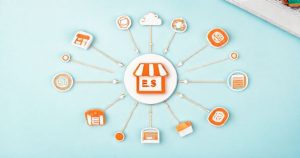In the competitive landscape of online retail, Etsy sellers constantly seek ways to optimize their operations and enhance customer satisfaction. Navigating numerous orders, managing inventory, and handling shipping can become overwhelming without the right tools. This is where Etsy integrations emerge as indispensable assets, transforming manual processes into streamlined, automated workflows. By connecting your Etsy shop with specialized third-party applications, you can unlock significant efficiencies, reduce errors, and free up valuable time to focus on creating and marketing your unique products. Understanding the diverse range of available integrations is the first step toward building a more robust and scalable Etsy business.
Understanding Etsy Integrations: A Gateway to Efficiency
Etsy integrations are essentially software connections that allow your Etsy shop to communicate and exchange data with other applications. These powerful tools extend Etsy’s core functionalities, enabling automation for tasks that would otherwise consume countless hours. From managing stock levels across multiple platforms to generating shipping labels with a click, integrations are designed to simplify complex aspects of running an online business. They provide a unified ecosystem where various operational components work in harmony, offering a holistic view and control over your seller journey.
The strategic implementation of Etsy integrations empowers sellers to move beyond reactive task management to proactive business growth. Imagine a system where new orders automatically update your inventory, trigger shipping label creation, and even log financial transactions without manual intervention. This level of automation minimizes human error, ensures data consistency, and allows sellers to scale their operations effortlessly. Furthermore, integrations often provide advanced analytics and reporting capabilities, offering deeper insights into sales trends, customer behavior, and overall business performance, which are crucial for informed decision-making and strategic planning.
Key Categories of Etsy Integrations for Sellers
Etsy sellers can leverage a wide array of integrations, each designed to address specific operational needs. Categorizing these tools helps in understanding their primary functions and how they can collectively enhance your business. Selecting the right combination of integrations depends heavily on your specific business model, the volume of your sales, and your long-term growth objectives. Exploring each category allows sellers to pinpoint areas where automation and enhanced functionality can yield the most significant benefits, transforming daily tasks into seamless processes.
Inventory Management Integrations
Efficient inventory management is paramount for any Etsy seller to prevent overselling or stockouts. Integrations in this category synchronize your stock levels across Etsy and potentially other sales channels, ensuring real-time accuracy. Tools like Craftybase or Sellbrite help track raw materials, finished products, and sales data, offering a comprehensive view of your inventory. They can also provide insights into popular items and slow-moving stock, guiding your production and purchasing decisions. Such integrations typically range from $29 to $99 per month, depending on features and sales volume.
Shipping and Fulfillment Integrations
Streamlining the shipping process is crucial for customer satisfaction and operational efficiency. Shipping integrations automate label creation, compare carrier rates, and provide tracking information directly to customers. Platforms like ShipStation, Pirate Ship, or Stamps.com integrate directly with Etsy, pulling order details to generate ready-to-print labels. This reduces manual data entry errors and saves significant time, especially for high-volume sellers. By optimizing shipping costs and speeding up dispatch, these integrations contribute directly to higher profitability and improved customer experience, minimizing delays.
Accounting and Bookkeeping Integrations
Managing finances accurately is vital for understanding your business’s health and simplifying tax season. Accounting integrations connect your Etsy sales data directly to bookkeeping software, automating transaction logging, expense tracking, and profit/loss calculations. QuickBooks Online and Xero are popular choices that offer robust integrations, categorizing income and expenses automatically. This eliminates the tedious process of manual data entry, reduces the likelihood of accounting errors, and provides clear financial reports at a glance. Accurate financial data supports better budgeting and strategic financial planning for sustained growth.
Marketing and CRM Integrations
Building strong customer relationships and executing effective marketing campaigns are essential for repeat business and brand growth. Marketing and Customer Relationship Management (CRM) integrations help automate email campaigns, manage customer inquiries, and segment your audience for targeted promotions. Mailchimp, for instance, can integrate with Etsy to automatically add new customers to your email lists. While dedicated CRM solutions like HubSpot might be more robust for larger operations, even simple email marketing integrations can significantly enhance customer engagement and drive repeat sales, fostering loyalty.
Print-on-Demand (POD) and Dropshipping Integrations
For sellers utilizing print-on-demand or dropshipping models, seamless integrations are non-negotiable. Platforms like Printful and Printify connect directly with Etsy, allowing you to list products (e.g., t-shirts, mugs, art prints) without holding physical inventory. When an order comes in, the integration automatically sends it to the print provider for fulfillment. This model significantly reduces upfront costs and logistical complexities, allowing sellers to offer a wide range of products. Profitability rates for POD products typically range from 20% to 40%, depending on the product and pricing strategy, making these integrations highly appealing.
Choosing the Right Etsy Integrations: Factors to Consider
Selecting the optimal Etsy integrations requires careful consideration of several factors beyond just feature lists. First, assess your specific business needs: what pain points are you trying to solve? Evaluate compatibility; ensure the integration works seamlessly with Etsy and your other existing tools. Consider the pricing structure, which can vary from free tiers to subscription models, and how it aligns with your budget and potential return on investment. Scalability is also crucial; choose solutions that can grow with your business without requiring a complete overhaul later, adapting to increasing demand.
Furthermore, delve into user reviews and testimonials to gauge the reliability and user-friendliness of prospective integrations. A tool might have impressive features, but if it is difficult to implement or use daily, its value diminishes. Excellent customer support is another vital factor, as you will likely encounter questions or issues during setup and ongoing use. Finally, evaluate the security protocols of any integration, ensuring your business and customer data are protected. Making an informed decision based on these criteria ensures you invest in tools that genuinely enhance your Etsy operations.
Implementing Integrations: Best Practices for Etsy Sellers
Successful implementation of Etsy integrations involves a systematic approach to maximize benefits and minimize disruptions. Begin by thoroughly researching each integration’s setup process and requirements. Prioritize starting with one or two key integrations that address your most pressing pain points, rather than attempting to implement many at once. Always conduct thorough testing in a controlled environment, if possible, before fully integrating into your live shop. This ensures data flows correctly and processes function as expected, preventing potential issues during live sales operations and maintaining seamless operation.
Once implemented, provide adequate training for anyone involved in managing your Etsy shop to ensure they understand how to use the new tools effectively. Regularly monitor the performance of your integrations to identify any glitches, data discrepancies, or opportunities for further optimization. Keep an eye on updates from both Etsy and your integration providers, as these can bring new features or require adjustments. Proactively managing your integrations ensures they continue to deliver value, adapt to changes, and support the ongoing efficiency and growth of your Etsy business.
Common Challenges and Solutions with Etsy Integrations
While Etsy integrations offer immense benefits, sellers may encounter challenges during implementation and ongoing use. A common issue is the learning curve associated with new software, requiring time and effort to master. Data synchronization problems, where information doesn’t update correctly or in real-time between Etsy and the integrated tool, can also arise. Additionally, some integrations might have limitations based on Etsy’s API, affecting the scope of automation possible. Understanding these potential hurdles allows for proactive solutions and smoother integration experiences.
To mitigate the learning curve, utilize tutorials, documentation, and community forums provided by the integration developers. For data sync issues, regularly check logs within the integration software and verify settings to ensure proper mapping and permissions. If an integration has limitations, consider if your core needs are still met or if an alternative solution might be more suitable. Sometimes, consulting the integration’s customer support can provide quick resolutions to complex problems. Proactive troubleshooting and continuous monitoring are key to overcoming these challenges and maximizing the utility of your Etsy integrations.
The Future of Etsy Integrations: What to Expect
The landscape of e-commerce integrations is continually evolving, and Etsy integrations are no exception. Sellers can anticipate more sophisticated, AI-driven solutions that offer predictive analytics, hyper-personalized marketing, and even greater automation of complex tasks. The trend toward no-code and low-code integration platforms will likely make it even easier for sellers to connect various tools without extensive technical knowledge. Increased focus on sustainability and ethical sourcing might also lead to specialized integrations that help track and verify these aspects of your products, aligning with consumer values.
As the digital marketplace becomes more competitive, the demand for seamless, intelligent, and interconnected tools will only grow. Expect integrations to offer enhanced cross-platform selling capabilities, allowing Etsy sellers to manage their presence on multiple marketplaces from a single dashboard more efficiently. The emphasis will remain on simplifying seller operations, reducing manual effort, and empowering small businesses to compete effectively in a global market. Staying informed about these advancements will be crucial for Etsy sellers looking to maintain a competitive edge and optimize their business for long-term success.
Unlocking Potential: Optimizing Your Etsy Operations with Integrations
Etsy integrations represent a powerful pathway for sellers to transform their handmade businesses into highly efficient and scalable enterprises. By strategically adopting tools for inventory, shipping, accounting, marketing, and specialized niches like print-on-demand, you can automate mundane tasks, minimize errors, and reclaim valuable time. The careful selection and thoughtful implementation of these integrations are not merely about convenience; they are about building a more robust, responsive, and profitable business model. Embrace the power of integration to streamline your workflow, enhance customer satisfaction, and unlock the full potential of your creative ventures on Etsy.





